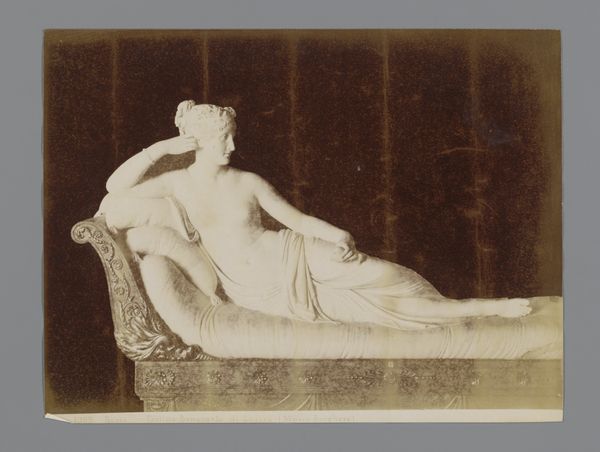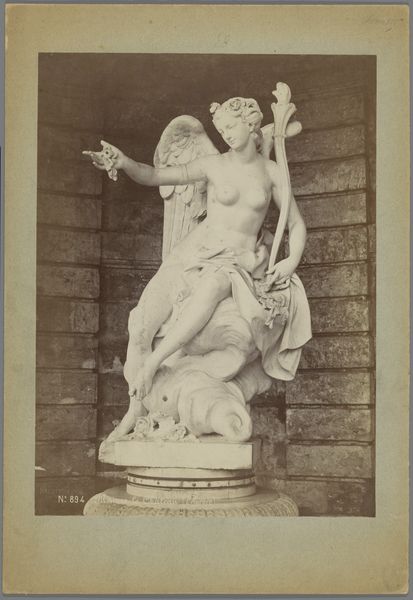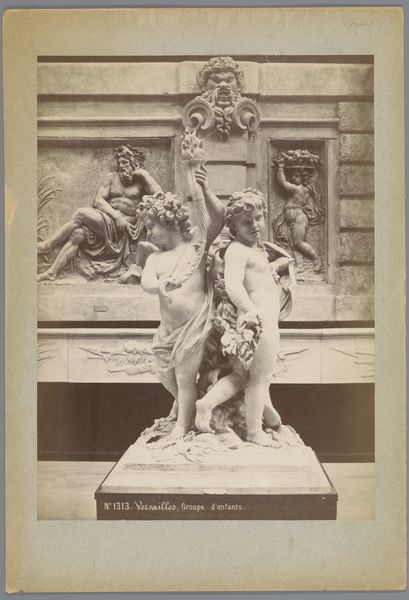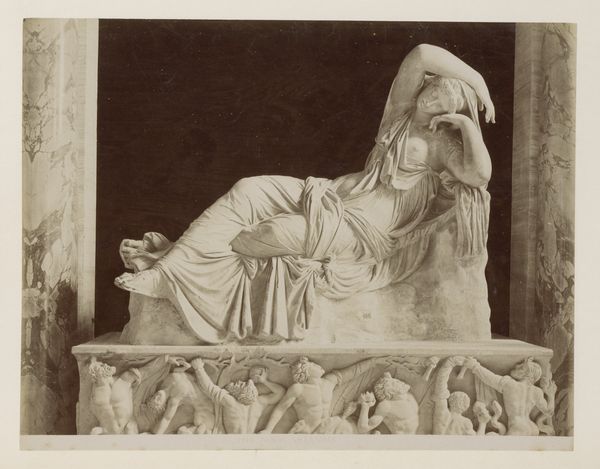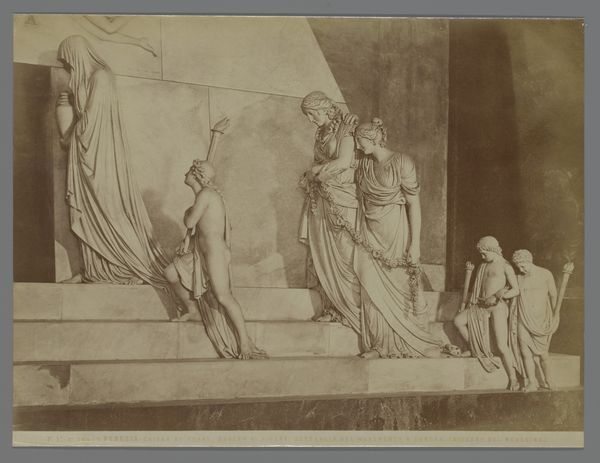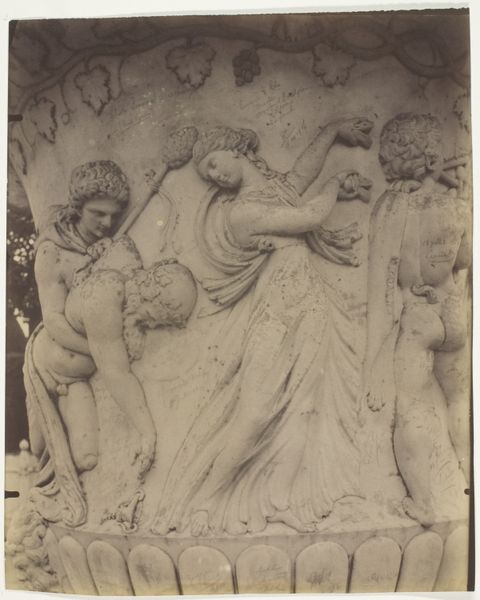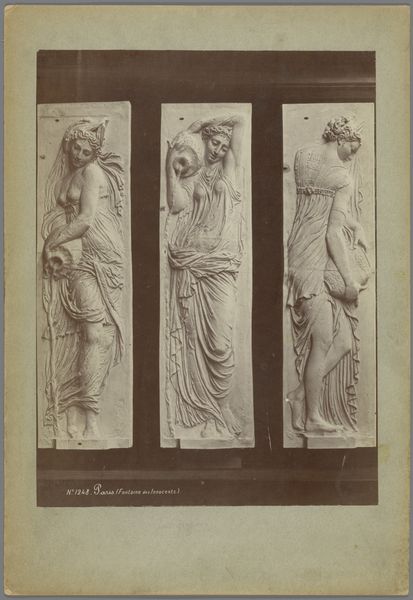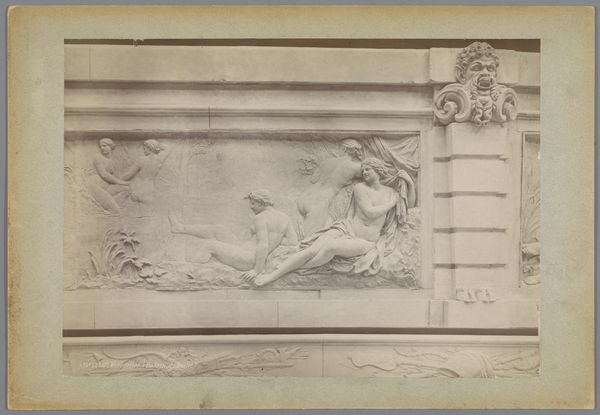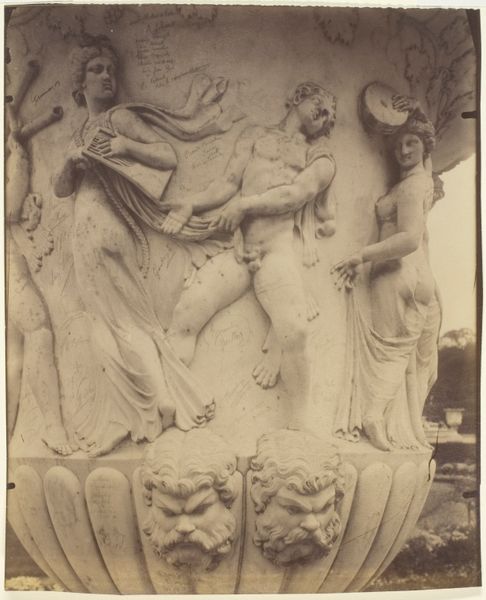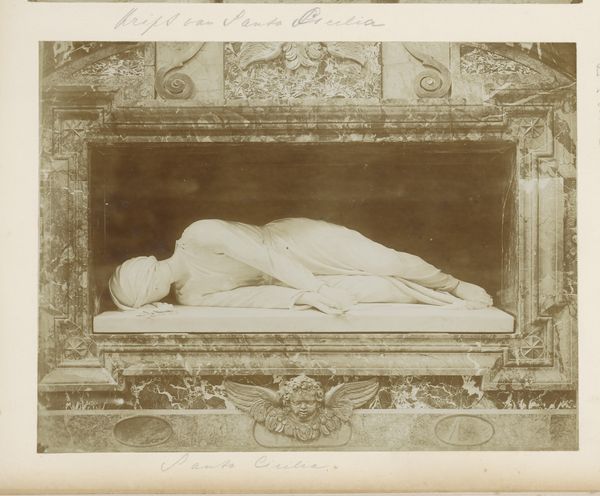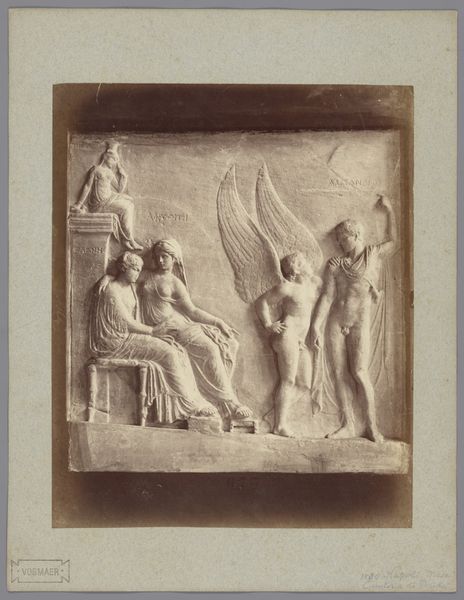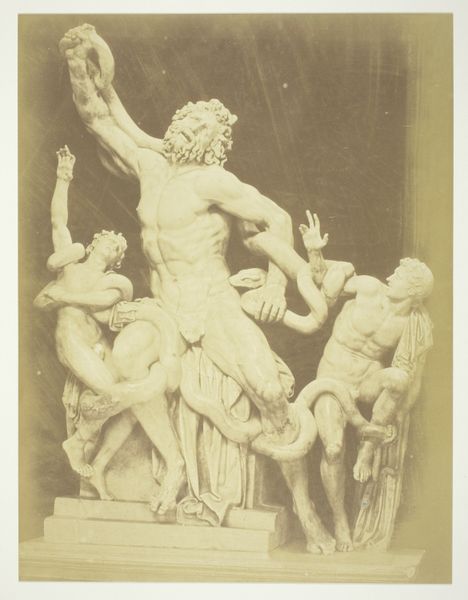
Fontein van Marforio in het Palazzo Nuovo te Rome, Italië 1852 - 1900
0:00
0:00
fratellialinari
Rijksmuseum
photography, sculpture
#
landscape
#
photography
#
ancient-mediterranean
#
sculpture
Dimensions: height 195 mm, width 252 mm, height 203 mm, width 259 mm
Copyright: Rijks Museum: Open Domain
Curator: Allow me to introduce a fascinating photographic work titled, Fontein van Marforio in het Palazzo Nuovo te Rome, Italië, dating from between 1852 and 1900 and currently held in the Rijksmuseum collection, credited to Fratelli Alinari. Editor: The sepia tones lend it a somber yet dignified aura, doesn't it? The languid pose of the sculpted figure—so reminiscent of a river god—seems to exude an almost world-weary wisdom. Curator: The photograph demonstrates remarkable compositional control. Note the way the sculptor used contrapposto with such subtlety, and the formal use of line directs the viewer's eye across the reclining figure. Editor: It makes me reflect on the enduring power dynamics embedded in such monumental displays of virility, doesn't it? Water, especially in Roman contexts, has always signified power and control. Who was it meant to serve and inspire awe in? Curator: You touch on a pertinent point. Certainly, classical art and its revival played a vital role in shaping civic identities and power structures through idealized forms and allegorical allusions. Editor: And who was allowed to access such representations of power? It also reminds me of how often marginalized communities are excluded from such narratives of beauty and authority. How do these works participate in constructing, or reinforcing, exclusion? Curator: Returning to the pure form, the textural contrast between the rough stone and the smooth skin of the figure also creates a rich sensory experience for the viewer. Alinari expertly captured these subtle nuances through the photographic process. Editor: Yes, but it’s difficult to overlook how the original sculpture may have celebrated imperial strength while conveniently ignoring the exploitation that fuelled it. Curator: Agreed. Even today, the composition remains strikingly relevant to art photography as it guides viewers towards multiple perspectives and questions about what art and photography can be, and represent. Editor: Absolutely. It provokes valuable discussions around visibility, authority, and responsibility and what purpose art plays in our life and contemporary society.
Comments
No comments
Be the first to comment and join the conversation on the ultimate creative platform.
